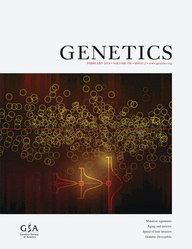Transposable elements don’t proliferate in genomes at a steady pace; they often arrive in bursts. But models of neutral TE evolution assume transposition occurs at a constant rate. That makes it harder to test, for instance, whether low TE allele frequencies in a population are due to negative selection or just a recent transposition burst. In the February issue of GENETICS, Blumenstiel et al. describe a test for neutrality that doesn’t make this assumption. They applied their approach to retrotransposon insertion data from North American and African populations of Drosophila melanogaster and found that age alone explained more than 80% of the variance in allele frequencies. The new framework could also be useful for analyzing selection on other types of large insertion mutations, like gene duplications.
Blumenstiel J.P., M. He & C. M. Bergman (2013). An Age-of-Allele Test of Neutrality for Transposable Element Insertions, Genetics, 196 (2) 523-538. DOI: 10.1534/genetics.113.158147 http://www.genetics.org/content/196/2/523













